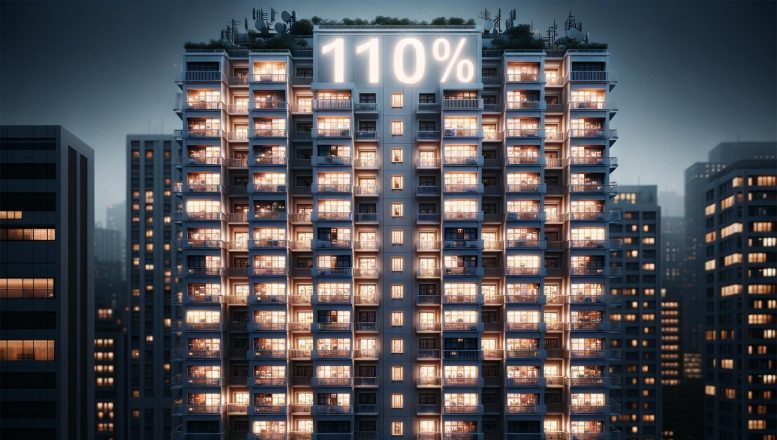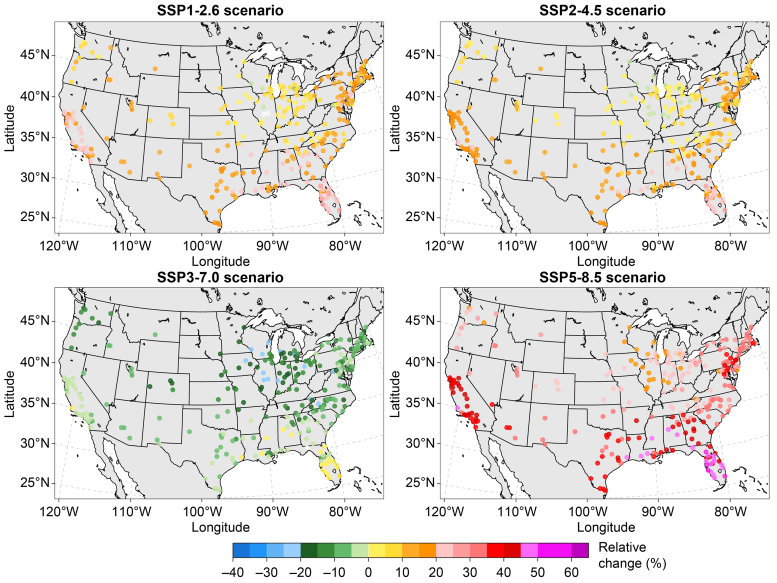
A study from the University of Oklahoma anticipates significant changes in urban building energy consumption due to climate change, underscoring the need for robust mitigation strategies and improved energy efficiency.
Researchers find that the energy use needed to cool buildings in U.S. cities may increase by 13.8% for each degree of climate warming on average.
A research study led by University of Oklahoma assistant professor Chenghao Wang and recently published in the journal Nature Communications tackled the critical issue of how city-scale building energy consumption in urban environments will evolve under the influence of climate change.
Fossil fuels account for approximately 40% of all building energy use in urban city centers in the United States, and the U.S. Energy Information Administration reports that residential and commercial buildings in U.S. cities are one of the major energy consumers (39%) and greenhouse gas emitters (28%).
“Understanding their future energy use is very important for developing climate change mitigation strategies, improving energy efficiency, developing and implementing energy and environmental regulations, policies, and incentive plans and enhancing the resilience and adaptation of our society under future climate and extreme weather conditions,” said Wang, who leads the Sustainable Urban Futures, or SURF, Lab in the OU School of Meteorology.
Prior Research and Current Study Objectives
“Previous studies made strides in estimating how energy use might change at the national or state levels in response to future changes in climate,” he said. “However, there is a significant gap in our understanding when it comes to the city scale. As global cities commit to ambitious sustainability goals, a more granular understanding of energy use at the city scale becomes imperative.”
The research team includes Janet Reyna and Henry Horsey from the National Renewable Energy Laboratory, Jiyun Song, Dachuan Shi and Yuyu Zhou from the University of Hong Kong, Sarah Feron from the Universidad de Santiago de Chile, Zutao Ouyang and Robert Jackson from Stanford University, and Ying Li from China Three Gorges University.

Visualization of change in annual source energy consumption in the 2050s relative to the 2010s under four warming scenarios with a zero-carbon electric power sector. Credit: Dr. Wang
They examined 277 cities across the contiguous U.S., using model simulations and the most recent future climate projections from the Coupled Model Intercomparison Project, or CMIP6, dataset. They considered four possible warming scenarios that encompass a variety of possible climate warming scenarios and two electric power sector scenarios.
“In one power sector scenario, we assumed no future carbon policies would be implemented, but we also included a scenario that assumes rapid decarbonization and net-zero carbon emissions from the power sector by 2050, similar to with U.S. carbon-pollution-free goals announced by President Biden in 2023,” Wang said.
Findings and Implications
To investigate how urban building energy use would evolve under future climate change, Wang’s team used an indicator called energy use intensity, or EUI. The EUI is the energy used per square foot per year and is calculated by dividing the total energy consumed by the buildings by their total gross floor area.
“Due to climate change, we found that city-scale building EUI is projected to experience uneven changes by the 2050s when compared to the 2010s,” Wang said. “The largest increase in electricity EUI will mainly occur in the South, Southwest, West, and Southeast, which will see an increase of up to 7.2%.”

A research study led by University of Oklahoma assistant professor Chenghao Wang tackled the critical issue of how city-scale building energy consumption in urban environments will evolve under the influence of climate change. Credit: University of Oklahoma
They discovered that the increase in electricity EUI during warm seasons and the hottest days will be much greater than the annual change, especially in the Northwest. This difference is mainly due to the higher air conditioning adoption rate and space cooling energy use under future warming. For each degree of warming, the average city-level space cooling EUI will increase by 13.8%.
“We found an average 10.1 to 37.7% increase in the frequency of urban summer peak building electricity EUI. However, some cities will experience over 110% increases. This will require higher grid capacity and also greater resilience against power outages during extreme heat waves,” Wang said.
Recommendations and Future Actions
The team also assessed the potential changes in the source energy used by urban buildings, considering energy losses during generation, transmission, and distribution.
“Power sector decarbonization is very effective in curbing the source energy consumption of future buildings in cities, but it’s crucial to further reduce direct fossil fuel combustion in buildings,” Wang said. “Simply put, we need rapid electrification for future urban buildings.”
Reference: “Impacts of climate change, population growth, and power sector decarbonization on urban building energy use” by Chenghao Wang, Jiyun Song, Dachuan Shi, Janet L. Reyna, Henry Horsey, Sarah Feron, Yuyu Zhou, Zutao Ouyang, Ying Li and Robert B. Jackson, 18 October 2023, Nature Communications.
DOI: 10.1038/s41467-023-41458-5
Learn more about Wang’s research through the Sustainable Urban Futures Lab at the University of Oklahoma.









The SSP5-8.5 scenario is generally considered improbable based on the known reserves of fossil fuels. While it is sometimes referred to as “Business As Usual,” the recent historical temperature changes suggest that SSP5-2.6 is closer to “Business As Usual.”
Note: That should be SSP1-2.6, which, incidentally hasn’t been implemented.